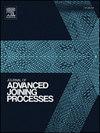Electron beam welding parameters for copper and dissimilar copper joints: Review, research gaps, and future challenges
IF 4
Q2 MATERIALS SCIENCE, MULTIDISCIPLINARY
引用次数: 0
Abstract
Copper welding presents significant challenges due to its high thermal conductivity and reflectivity, making traditional welding methods largely ineffective. Electron Beam Welding (EBW) offers a promising solution but requires precise parameter control to achieve optimal results. This study is a systematic review following a structured search of Scopus and Web of Science. After title–abstract–full text screening using predefined inclusion criteria (experimental EBW of copper or copper–dissimilar joints reporting process parameters and weld performance), 163 peer-reviewed articles were retained. For each study, the authors extracted process parameters (accelerating voltage, beam current, welding speed, focus/defocus, beam oscillation), material characteristics (alloy type, thickness, surface preparation), and outcomes (penetration, porosity, microstructure, mechanical properties). Reported statistical measures were consolidated to quantify the dominant influences of the parameters, and a SWOT analysis, along with a research gap analysis, was performed. Research indicates that vacuum-based EBW effectively overcomes copper welding difficulties while producing superior joint quality compared to other fusion processes. EBW achieves deep weld penetrations of up to 30 mm with minimal defects in copper, producing joint strengths of up to 264 MPa, equivalent to approximately 95% of the base material strength. Key welding parameters, including beam current, welding speed, focus position, and oscillation patterns, significantly influence weld quality, with beam current exerting the strongest effect on penetration depth. When joining copper to different materials, careful beam positioning and oscillation techniques successfully control unwanted compound formation while maintaining joint strength. Key findings establish that beam current accounts for 81% of the variance in weld quality control; strategic beam positioning with 0.4–0.5 mm offsets optimizes dissimilar joints, achieving strengths of 250 MPa; oscillation patterns reduce porosity by 30% while controlling intermetallic formation; and significant research gaps remain in copper tube joining applications for thermal management systems. This framework enables precision joining of high-performance copper systems for next-generation energy and electronics applications.
铜和异种铜接头的电子束焊接参数:回顾、研究空白和未来挑战
由于铜的高导热性和反射率,传统的焊接方法在很大程度上是无效的,因此铜焊接面临着巨大的挑战。电子束焊接(EBW)提供了一个很有前途的解决方案,但需要精确的参数控制以达到最佳效果。本研究是对Scopus和Web of Science进行结构化搜索后的系统综述。在使用预先定义的纳入标准(铜或铜异种接头的实验EBW报告工艺参数和焊接性能)对标题-摘要-全文进行筛选后,保留了163篇同行评审的文章。对于每项研究,作者提取了工艺参数(加速电压、光束电流、焊接速度、聚焦/离焦、光束振荡)、材料特性(合金类型、厚度、表面处理)和结果(渗透、孔隙度、微观结构、机械性能)。合并报告的统计措施,以量化参数的主导影响,并进行SWOT分析,以及研究差距分析。研究表明,真空电弧焊有效地克服了铜焊接的困难,同时产生的接头质量优于其他熔合工艺。EBW在铜缺陷最小的情况下实现了30毫米的深焊缝穿透,接头强度高达264兆帕,相当于基材强度的约95%。梁电流、焊接速度、焦点位置、振荡模式等关键焊接参数对焊接质量影响显著,其中梁电流对焊深影响最大。当将铜连接到不同的材料时,仔细的梁定位和振荡技术成功地控制了不必要的化合物形成,同时保持了连接强度。主要研究结果包括:焊缝质量控制中81%的变化是由光束电流引起的;偏移量为0.4 ~ 0.5 mm的策略梁定位优化了不同节点,实现了250 MPa的强度;振荡模式在控制金属间形成的同时降低了30%的孔隙度;在热管理系统的铜管连接应用方面仍存在重大的研究空白。该框架能够精确连接下一代能源和电子应用的高性能铜系统。
本文章由计算机程序翻译,如有差异,请以英文原文为准。
求助全文
约1分钟内获得全文
求助全文

 求助内容:
求助内容: 应助结果提醒方式:
应助结果提醒方式:


